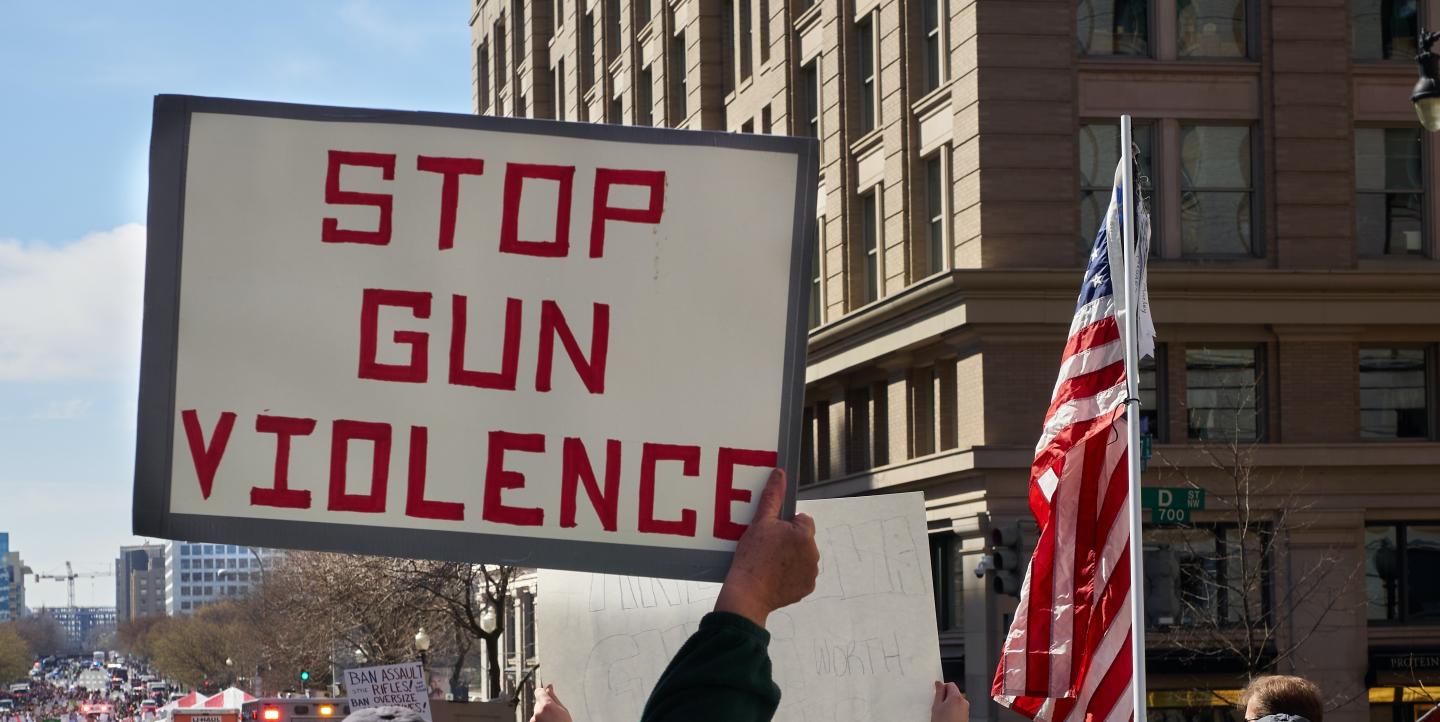More than 31,000 people to date have died due to gun violence in the U.S. in 2022 alone. During the same period, amost 17,000 people have died by suicide at the hands of guns, and there have been over 480 mass shootings — defined as the deaths of three or more people in a single shooting — this year.
Many people may hear about mass shootings in particular, but the reality is not every incident — especially daily gun violence — is covered by newsrooms. Public perception might underestimate the scale of its severity, as a result.
Gun violence isn't just a U.S. concern, either; it affects other countries as well, especially in Central and South America.
During a recent ICFJ Global Crisis Reporting Forum webinar entitled “Gun Violence and How to Report on It,” Abené Clayton, a lead reporter for The Guardian U.S. series, Guns and Lies, which looks at community gun violence in California, provided tools and guidance on how journalists can improve their coverage.
Becoming a reporter covering gun violence
Early in her career, Clayton reported on city meetings and initiatives such as efforts to provide fresh food and spur community development. “I never planned on covering gun violence,” she recalled. “It would always come back as, ‘maybe it would help reduce some of the gun violence, too.”
Clayton began covering gun violence in 2019, focusing on her hometown of Richmond, California, where she reported on communities most impacted by shootings and homicides.
“Growing up, I just knew that gun violence was a thing. At a certain age you start to hear about young people being shot and killed. I was used to hearing gunshots and I always knew it affected people that look like me the most,” said Clayton, who is Black.
Clayton noted that most gun violence is on a smaller scale than mass shootings. “Suicide [accounts for] most of the gun violence in the U.S, it’s over about 50%. After that we have what we call community gun violence,” which sees disproportionate gun-related deaths in specific neighborhoods, particularly in under-resourced Black and Hispanic communities. “Those are the instances that I refer to when I’m saying gun violence.”
“More generally, I’m speaking about community violence specifically,” she said. “My colleague, Lois Beckett, a senior reporter for The Guardian, saw a similar phenomenon happening where there was this very intense focus on mass shootings that was overshadowing the daily gun violence that people experienced.”
Beckett decided to apply for a grant from the California Wellness Foundation to fund Guns and Lies, which has now run for nine months.
How to maintain relevant reporting on gun deaths
Gun violence is a pressing problem, and yet it can be difficult to produce reporting that resonates with readers.
One approach Clayton suggested is to, every few months, analyze and produce a round-up of incidents of gun violence that may have gone uncovered in the news cycle, including speaking with the people involved or affected, “That is something that I found to be a successful way to keep things fresh and push them forward,” she said.
Reporters, too, should center people in their coverage who often get overlooked in the news. “I think that stories about poor people, Black and brown folks haven’t been told enough. It's an area where I have found it’s kind of always fresh. People are always surprised when I get a first-person account of somebody who lost their son or daughter,” she said.
There is often an opportunity to go deeper in reporting about major events beyond the headlines. If there is a mass shooting, for instance, consider what the community has experienced in terms of daily gun violence beyond the singular event. “As a reporter you can go to neighboring communities or look at the state or county, looking at where most of the gun violence is concentrated. These are the people that are trying to do something about it,” said Clayton.
A few weeks ago, Clayton worked on another story angle focusing on the increase in highway shootings. “Not often do we get to hear directly from the people who are affected, and hear from law enforcement about why it’s happening,” she said.
Politicization of gun violence reports
Journalists should prioritize putting the victim at the center of their reporting, Clayton advised. “I saw a story about a young man who was shot and killed in Los Angeles [whose] father is a cop watcher," she said. "There was a little bit about the victim in the news [and] what his family had to say, but then a lot of the coverage focused on efforts to defund the police."
Due to how polarizing the issue is, news outlets can have different sets of values and perspectives regarding coverage of gun violence. This being the case, journalists should always prioritize their journalistic independence, Clayton advised. First and foremost, focus on the facts and details of your story.
“If you are covering gun violence and you are concerned about being part of the circus [of politicized gun violence reporting], as long as you have your data points right, [and] you have double checked, have talked to your criminologists and law enforcement, then you have a building block of a pretty infallible story,” she said.
Photo by Chip Vincent on Unsplash.


